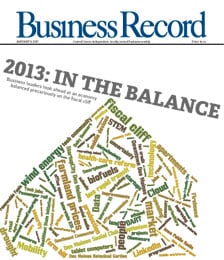Expect turbulence in the merger of KLM, Air France

Dear Mr. Berko: I’m thinking about buying 200 shares of KLM Royal Dutch Airlines at $20. I know the company lost more than $10 a share last year but estimates predict a profit this year of almost $1 a share. The company has a book value of more than $41 a share and pays an 11.5-cent dividend. What do you think? B.H., Elkhart, Ind.
Dear B.H.: KLM Royal Dutch Airlines recently merged with Air France. The new airline, Air France KLM, trades on the Big Board under the moniker AKH and the recent price was $16.59 a share. This new entity has $23 billion in revenues, vaulting it over American, with $17.5 billion, and now ranks No. 1 in the airline world.
Under the terms of this deal, the French government owns 45 percent of Air France-KLM. That might be a good reason not to own shares of this airline.
Supposedly the new airline is to be jointly managed by KLM’s chief executive officer, Leo van Wijik, and Air France’s chairman, Jean Spinetta. Remember what happened a few years ago when Daimler-Benz AG swallowed Chrysler Corp. and ousted most of Chrysler’s management — creating an international donnybrook that still smolders today? Shortly after the marriage, the new stock began crashing from its $117 merger high to $26 last year.
These two high-powered airline mavens believe that the synergies from this merger will save a huge bushel of francs and a big bundle of guilders. And the French promised the Dutch that not a single airline job would be lost as a result of this merger. They believe that they can save at least $90 million (peanuts) the first year by better managing its fleet of 570 aircraft. They believe that in following years, they can save $600 million annually by closing 80-plus route destinations, eliminating overlapping flights and consolidating all other activities while keeping dual headquarters in Paris and Amsterdam. Hmm.
Two airline big shots (one is retired) tell me that AKH will have to lay off between 25 percent and 35 percent of its newly combined payroll to meet those savings goals. But whose heads will roll? Well, because the French government owns 45 percent of the new company, you can bet your croissants that most of the walking papers will be given to the Dutch. If not, the feisty French unions will encircle Charles de Gaulle Airport with tractors, bulldozers and wagons so that not even a helicopter will be able to land. And then the French government will cave in again to the unions.
The European airline business is in tatters, and this merger between KLM and Air France could easily weaken Germany’s Lufthansa, which already has lost more than $1 billion and is groping blindly for salvation. Shares in Italy’s Alitalia were recently suspended from trading as the Italian government warned of bankruptcy because talks between the carrier and its unions are failing. The Italian government owns 62 percent of Alitalia, which is losing $60,000 an hour. Plans to lay off about 4,000 of the carrier’s employees resulted in wildcat labor strikes in May at airports across Italy. Need I remind you that the French government owns 45 percent of Air France-KLM?
Arguably, the best time to buy a stock is when blood is running in the gutters and not a soul on the horizon is willing to put a dollar on the table. However, in this specific instance, I think you may be pushing the envelope far beyond the limits of caution.
Carriers like Air France-KLM, Lufthansa, Alitalia and American, Delta, United, etc., are dinosaurs. Their labor unions have strangulation work rules that create massive inefficiencies, labor costs are frighteningly high and, per dollar earned, airline employees may be among the least productive workers in the industrialized world.
These carriers have very fragile balance sheets. They have debilitatingly high fixed costs to finance outrageously expensive aircraft that are high maintenance and guzzle fuel like aircraft carriers. As if that weren’t enough, these companies are stuck with managers who continue to promote the old style of doing business. These older carriers are Rust Belt and smokestack airlines and will not survive in their present corporate structure.
The new kids on the block are the smaller, more flexible and nimble lines like Southwest, Ted, AirTran, Song, JetBlue, Virgin Atlantic, etc. They have low fixed costs, younger, creative management, flexible work rules and efficient planes. These carriers are the future of the industry.
TWA, US Airways, British Airways, Continental, Northwest, et al., are today’s troglodytes — like Packard, Hudson, Studebaker and Oldsmobile were in the automotive world.
Please address your financial questions to Malcolm Berko, P.O. Box 1416, Boca Raton, Fla. 33429 or e-mail him at malber@a






